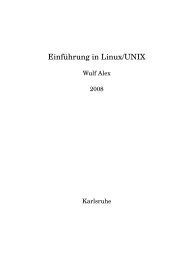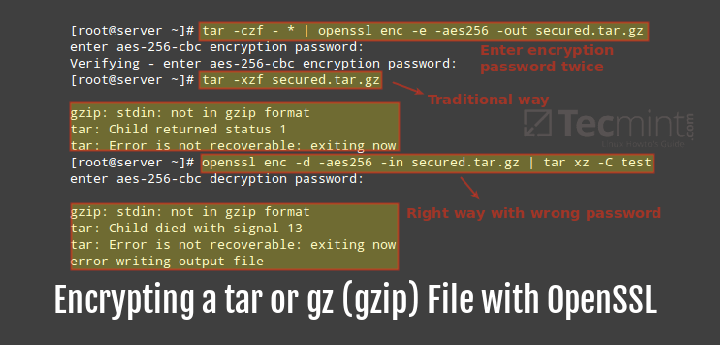This is really not all that different from how executable load modules are stored on the mainframe except you don't want the file to be a PDS dataset. I'm not at my office right now and I think I have some examples of NDM that transmit load modules that I can look-up if this suggestion doesn't work but I.
- Ndm File Transfer Tutorial Unix Download
- Ndm File Transfer Tutorial Unix
- Ndm File Transfer Tutorial Unix File
- Ndm File Transfer Tutorial Unix Pdf
- Ndm File Transfer Tutorial Unix Programming
- After installing Linuxbrew, you can install NDM using the following commands: $ brew update $ brew install ndm. On other Linux distributions, go to the NDM releases page, download the latest version, compile and install it yourself. Launch NDM either from the Menu or using application launcher. This is how NDM's default interface.
- Unix Basic Commands. TCP Socket Programming in Unix Using C Programming. UDP Socket Programming in Unix Using C Programming. TCP File Transfer Socket Programming in Unix Using C Programming. Read RAW Socket in Unix Using C Programming. Message Queue in Unix Using C Programming. FIFO Client/Server Program in Unix Using C.
- Sendunc process snode=ndmservername snodeid=(id on tofileserver) s1. Copy from (file=fromfile pnode) ckpt=16M compress=extended. To (file=tofile snode disp=rpl); Then run NDM pointing to the above file. We run on Unix, the following command, to go get a file off of a windows box: /ndm/ndm/bin/ndmcli -x &1.
[ SDF Public Access UNIX System .. Est. 1987 ]
joinwelcomefaqstatusmembersprojectsstoretourgopherabusedialupminecraftsocialtildenihongoeuropawebmailgalleryusermapirctutorialssoftwaretelnetgitssh
This tutorial discusses various ways to get data from and to a local(external) machine into and out of SDF.
Contents
- FTP - File Transfer Protocol
- scp and sftp - secure copying and ftp
- ssh and tar - securely copying directories
- Gopher and HTTP - using the internet for download
- Terminal - direct copying via the terminal
- E-mail - for small files only
- Glossary - explications of terms
To Do
- x/y/zmodem transfers
- kermit transfers
Introduction
To transport data between SDF and your local (or any other external)machine, there are various ways. Their availability depends on your memberlevel on SDF (see theFAQ, MEMBER sectionfor more information), the external system, and their connection.
FTP - File Transfer Protocol

FTP(File Transfer Protocol) on SDF is available only fordownloading public files. This is for security reasons. Forupload and download of private files, scp and sftpmust be used.
Note: ARPA membership allows for up-&download via FTP; however,it is better to use scp or sftp if possible, as FTP is unencrypted, and your passwords also have to travel in the clear.
For download, point your FTP program to sdf.org and doanonymous FTP to read data (username anonymous, passwordyourlogin@sdf.org, or another of your e-mailaddresses).
scp and sftp - secure copying and ftp
scp and sftp are secure ways to transfer data between computers,based on ssh (secure shell). If you've only worked with ftp before, you'll be surprised at the ease and benefits to using scp.
Let's say you're logged into sdf and you want to transfer some pictures from your home machine (named foo in this example) to your sdf home directory. You would want to use the following command:
scp *.jpg me@sdf.org :/your/remote/home/
Let's break that down
- scp
- The command itself.
- *.jpg
- The files you want to transfer.
- me@sdf.org
- Your username @ the server you wish to connect to.
- :/your/remote/home/
- The directory you'd like to upload it.
Unless you've installed ssh authorization keys, you'll be prompted for your username and password. Afterwhich, you should have output similar to this:
On SDF, you need to have ARPA membership to be able to use them. Check the manpages of scp and ssh for more information and options to use.
On Windows machines, you can use the PuTTY programs.
ssh and tar - securely copying directories
The tar archiving tool can be used with ssh to quickly duplicate wholedirectory trees:
tar cf - target_dir | ssh me@freeshell.org ' tar xf - -C ~/path/ '
Note: this trick requires compatible versions of tar on the local and remote systems
Gopher and HTTP - using the internet for download
To get data out of SDF on a local machine, you can of course publish themon your gopher- or web-site. Please check theFAQ, GOPHER sectionand thewebsite tutorialfor information how to set up these sites.
Please note that HTTP traffic is bandwidth limited depending on yourmembership level; if you go over the quota, your site will be temporarilyblocked!
To prevent access by everybody, see the FAQ entry aboutpassword protectionof websites.
Terminal - direct copying via the terminal
For transferring small amount of text data (scripts, tables,source code snippets), think about copy/paste directly in theterminal! If you areMetaARPA,then you can use screen and its built-in copy facility totransfer data between different screens.

Ndm File Transfer Tutorial Unix Download
To append text input in the terminal to a file on SDF, you can open thefile on SDF in your favouritetext editor.Or simply use the command cat >>file, sendthe data to the terminal (via the paste function), and finish witha single line containing only ^D (CTRL-D) - to do that in theterminal, hit RETURN, CTRL-D, RETURN; this will close the standardinput the cat was reading from.
E-mail - for small files only
If you have to transfer binary data and cannot use scp (because you're notARPA,which is a pity), then you may need to use file transfer via e-mail. Forthis, you attach the data you want to get into SDF to a message which yousend to your address on SDF (yourlogin@sdf.org). On SDF, youread the message and save the attachment where you need the data (e.g, inyour home directory, from where you can move them using mv).
This may not work for large attachments, as the e-mail system(everywhere!) was not intended for file transfer. If you have toregularly transfer large files, you should seriously considerbecoming ARPA!
Glossary
- ARPA and MetaARPA
- These are additionalmembershiplevels on SDF which allow for more commands and provide more space and thegood feeling of supporting SDF!
- download
- to get data from SDF to your local machine; imagineSDF sitting somewhere uphill so that everybody can see it - thenyou get the data down from SDF
- This is a software suite for Windows machines for ssh and scp connections.
- SDF
- Super Dimensional Fortress - if you don't know what that is,then why are you reading this..? wink
- terminal
- The equipment used to connect to a computer in text mode(for a more accurate definition see the correspondingWikipedia entry),or in a narrower context the window which gives access to a SDF in text mode.If you are using Windows, it may be a telnet window (or better usePuTTY for secure access via ssh - that's even possible withoutbeing ARPA), or on a Linux machine an xterm window.
- upload
- to get data to SDF from your local machine; seedownload
(this page was generated using ksh, sed and awk)
This file explains how to copy files between Unix/Linux machines and between Unix/Linux and other machines running Windows or Mac OSX.

The Course Linux Server is an example of a Unix/Linux machine.
For security reasons, SFTP file transfer to the CLS is not permitted. You may only transfer files from the CLS to your local machine.
1.1 Connecting from other machines to the Course Linux ServerIndex
Usually, you will be using some local machine (e.g. your own laptop or desktop machine running Windows or OSX) and you will want to connect to the Course Linux Server (CLS) to transfer a file. This means you need to know the network name of the CLS. It has two names:
The CLS is located on the Internet at address cst8207.idallen.ca (a public address). This address is visible anywhere on the Internet, giving you access to the machine without needing to use the Algonquin College VPN. Use it from home or off-campus.
The CLS also has an on-campus private IP address cst8207-alg.idallen.ca usable only via the VPN or while on campus at Algonquin College. Use the private address when you are on-campus.
1.2 Connecting from the Course Linux Server to other machinesIndex
Ndm File Transfer Tutorial Unix
Rarely, you might be logged in to the CLS and want to connect from the CLS (the local machine) to another machine (the remote machine) to transfer a file.
Connecting from the local Course Linux Server out to a remote machine (e.g. using a command-line ftp or ssh command) requires that the remote machine have its own accessible IP address – the remote machine should not itself be behind a firewall, unless you have arranged a pass-through port on that firewall. The remote machine must be running a file transfer server of some sort, to receive a connection from the CLS.
This is not usually the case, so most file transfer is done by running the file transfer software on the local machine and connecting to the CLS as the remote machine.

1.3 Locked out of the CLSIndex
All file transfer programs need your CLS account name and CLS account password. If you fail to provide both accurately, you will be locked out of the CLS after several failed connection attempts.
A common error is to fail to provide your account name to the file transfer program, so that it uses a blank name. Don’t do that. Always make sure your CLS userid is being used.
Ndm File Transfer Tutorial Unix File
If your IP address gets locked out, follow the directions to get your IP address unlocked.
Ndm File Transfer Tutorial Unix Pdf
1.4 Text File Line End DifferencesIndex
Text files contain lines of text delimited (or terminated) by an end-of-line character (or characters). The line end character(s) in text files is not the same between Unix/Linux, Windows, and some versions of MacOS.
- A text file written on Unix/Linux contains only a linefeed (
LF) (sometimes called newlineNL) character at the end of each text line. - A text file written on early MacOS contains only a carriage-return (
CR) character at the end of each text line. - A text file written on DOS or Windows contains both a
CRcharacter and aLFcharacter at the end of every line.
Here is a Linux example using the od file dumper command to make the newline character visible:
The Unix/Linux command file can identify text files that have CR (Macintosh) or CRLF (DOS/Windows) line terminators:
Line-end differences may result in “staircasing” text (missing carriage returns) if you send a Unix/Linux text file to a Windows printer from some programs (e.g. Notepad). MacOS files may end up over-printed all on one line, due to the missing line feed characters!
Ndm File Transfer Tutorial Unix Programming
Print a small sample first, and on Windows try using Write or Wordpad to read or print a Unix/Linux file instead of the old Notepad.
Some file transfer programs may optionally translate line-endings if they recognize that the file being transferred is a text file.